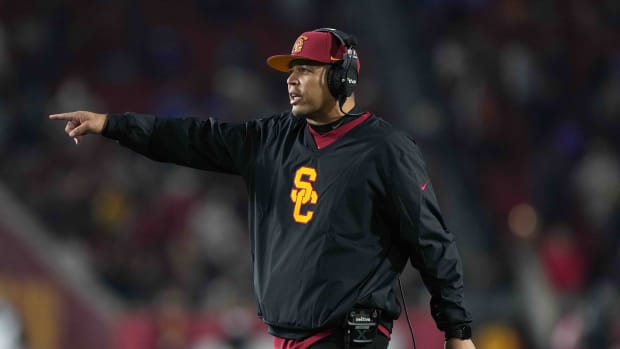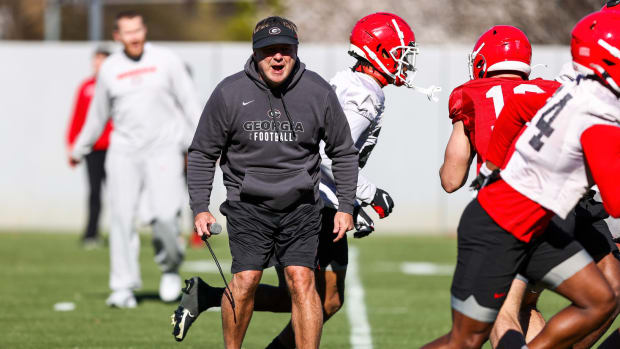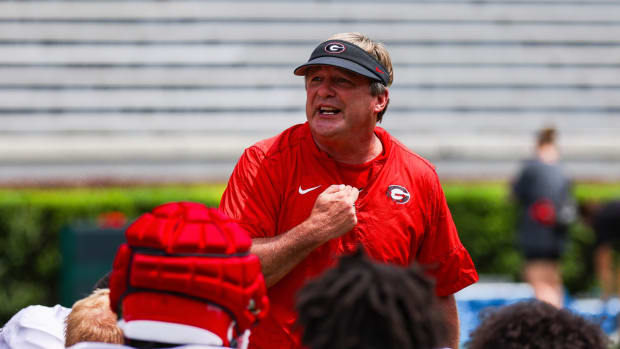Monken Steers Georgia Offensive Revolution
Anytime a new offensive coordinator is hired at a program like Georgia's, the fan base wants immediate results. A noticeable change on the scoreboard and stat sheet is expected.
There's only a few games in the books, but an evaluation of new coordinator Todd Monken is timely coming off the team's off week.
Under coordinator James Coley in 2019, Georgia averaged 23.5 points per game against SEC opponents. In 2020, with Monken leading the way, Georgia is averaging 33.0 points per game. Increase in points? Check.
So, Georgia is scoring more points, but how? What has Monken actually changed other than running nearly 11 more plays per game, and throwing the ball a bit more?
That's what the film is for. We took a deep dive into the subtle changes that Monken has made on this offense through just four games of SEC play this season.
12 Personnel
Georgia's base personnel package under Coley tended to be 11 personnel (one back, one tight end). When wide receiver Lawrence Cager was injured and out of the lineup, as he was for a large portion of the season a year ago, Coley's offense relied heavily on 12 personnel. In 2020, they use 12 personnel a large portion of the time. This allows for a much heavier run-blocking attack while opening up the play-action passing game that has been gratuitous to this Georgia offense this season.
WATCH:
2x2 vs. 3x1
Under Coley, Georgia's base formation appeared to be 2x2: two receivers on the left, two receivers on the right. That allowed the quarterback to decide where to go with the ball and work that side of the field; basically a "half-field read." This style of offense placed more of an emphasis on wide receivers winning their individual battles.
With Monken, though he can get into 2x2 sets, he prefers the 3x1 surface. This provides the offense with an ability to cross receivers within their route tree more often, which places more pressure on defensive backs and ultimately leads to more busted or blown coverages.
Quarterback Changes
With Coley, much of the success or failure of the offense was placed on the quarterback's decision-making. With an experienced player like quarterback Jake Fromm, that made sense. He was able to process information quickly and get the ball out on time. However, there's still room for error in this situation. Additionally, upon reviewing game tape from a year ago, it appeared the offensive staff asked Fromm to do things that most wouldn't characterize as his strengths.
For example, Fromm has never been known for his incredible arm strength. So, an offensive coordinator asking him to throw 15-yard out routes from the far hash is not something that meshed with his talents. Additionally, there were numerous times during games where RPOs were called with a quarterback that was clearly not willing to keep the football.
Under Monken, the decisions are ultimately being made for Stetson Bennett, or whichever quarterback is in the lineup for Georgia. The play design is made for one specific player to be wide open, with a backup plan instituted if that player is covered. He's also shown an ability to tailor his offense for each respective quarterback. The offensive design he had for D'Wan Mathis to begin the season was quite different than what he is currently running with Bennett.
You can follow us for future coverage by clicking "Follow" on the top righthand corner of the page. Also, be sure to like us on Facebook @BulldogMaven & follow us on Twitter at @DawgsDailySI.




